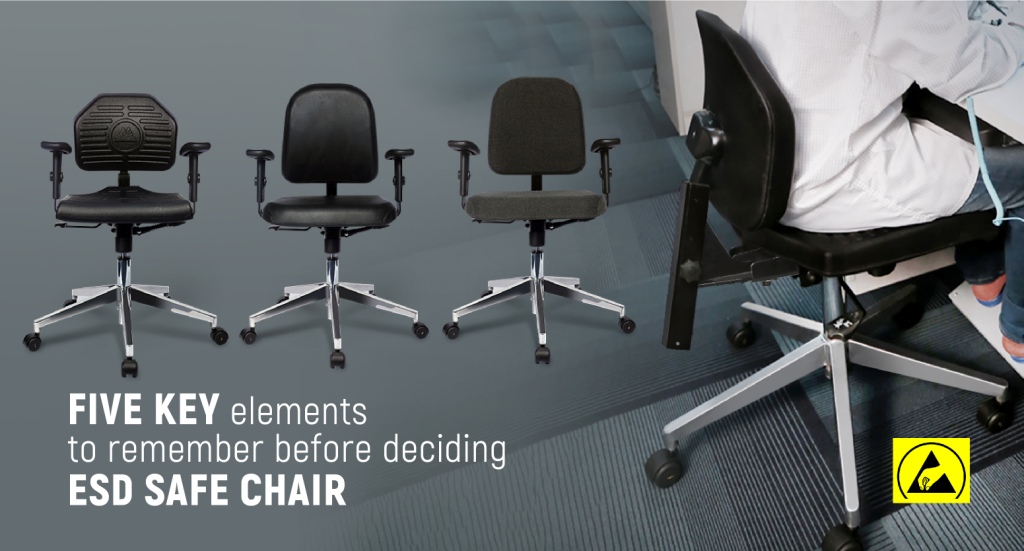
Five Key Elements to Remember Before Deciding ESD Safe Chair
We feel the effects of static electricity so often, and usually it’s quite harmless. But in Electronic workplaces such as an electronics assembly line or electronics testing laboratory, ESD or Electrostatic Discharge poses a serious danger. Not so much to the operators but to the high impedance microprocessor based PCB assemblies, Electronic equipments and components being worked upon.
Besides other equipment required to counter the effects of ESD, it is essential that you also equip your lab with specially and scientifically designed ESD safe furniture. Getting ESD safe chairs to complement your ESD work tables is definitely called for.
All design elements in an ESD chair including the ESD seats and backs, the mechanism for tilting, the hydraulic cylinder, the star base and the ESD casters should all be designed to conduct the ESD to be discharged to the ESD flooring in the respective laboratories.
So deciding to buy an ESD chair to minimize the risk of ESD is an important requirement.
But how do you pick the right chair? Here are 5 qualities to look for:
1. Third party verification
There are many ESD chairs available in the market that claim to be ESD safe. Ask for third party certification to ensure the chair has been tested and will deliver as advertised. From the chair seat and backrest to the ESD chair casters and other plastic or metal parts, every component should discharge static electricity as per recognized standards.
The world’s leading manufacturers such as Werksitz (Germany) produce ESD chairs as per stringent international standards i.e. ANSI ESD S20.20-2014 defined by Electrostatic Discharge Association [ESDA], IEC-EN-61340-S1 defined by The International Electro technical Commission.
While checking the Chair for its ESD properties, the resistive range while using a megger, should be in the range of (1*10^6) to (1*10^7) one megaohm to ten megaohm.
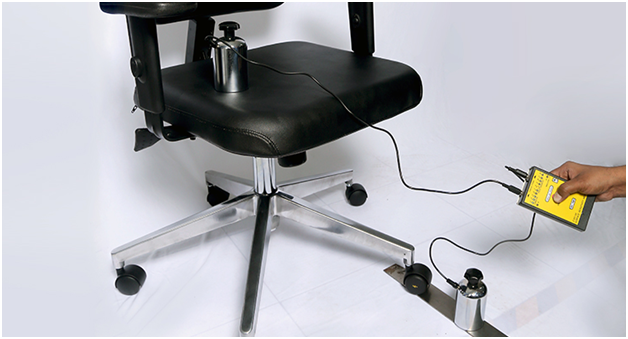
2. Ergonomics
While your primary motive may be ESD protection, don’t forget that the operator will be spending many hours at a stretch on the chair. The operator will also be reaching out to various instruments, bins, soldering iron and keyboards. For this he would be continuously moving left, right, up and down, so the chair selected should facilitate him to do it easily while supporting his back extensively. Long hours of such work without a properly designed chair, results in discomfort and thus loss of productivity. So comfort and ergonomics is extremely important. Ergonomic chairs are designed to promote good posture, promote productivity and minimise risks of workers developing injuries or problems from repetitive tasks or long hours of sitting.
The seat’s height, depth and angle; the backrest’s angle and lumbar support; the smooth movement of the casters; the supportive armrests – all this needs to be considered – and adjusted to serve individual employees. A chair that can be easily adapted for personal needs will assure sitting comfort and good back support. Moreover, the chair should be sturdy and well supported by heavy duty casters to allow smooth movement and prevent accidents.
The appropriate standard for this functionality is DIN 68877 (occupational health and safety standard).
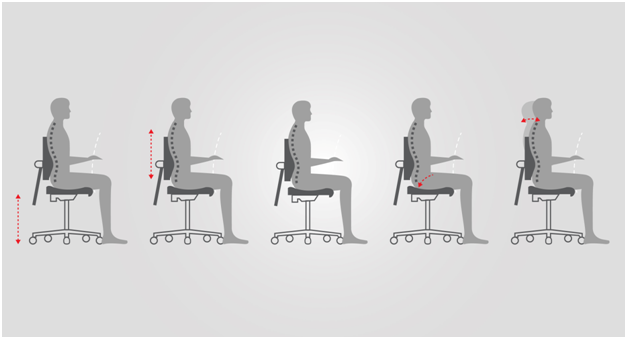
3. Warranty
Check out the chair’s warranty before choosing to buy. There will be cheaper options with little or no warranty, but such chairs are sure to be less effective and less durable. Your chair should come with at least a 3-5 year warranty, to ensure you’re buying a good product from an excellent manufacturer.
4. Upholstery
While deciding the seat covering for the seat and back of the chair, you have many choices and you have to choose appropriately.
Some find ESD PU more suitable, others find Synthetic leather or fabric more comfortable; some prefer a material that’s stain-resistant and easy to clean. Depending on the needs of your workplace and operators, look for chair coverings that fulfil your needs while providing effective cover from static electricity. Please note that the ESD characteristic of the chair especially of the seat and back should not wear away with time. There are many cheaper chairs in the market where only an ESD spray is used over the material on the seat and back. This can soon wear off and you would have a chair with Zero ESD characteristic, which is dangerous for the electronic circuits. As per ISO 9000, when your assembly or test unit is checked for ESD compliance, you will find that such chairs made by these poor quality manufacturers will not meet the desired parameters of ESD.
Materials can be of different types:
- Polyurethane: The PU chair has a typical material density of 300-700 Kg/m3 and is directly molded into the shape of the seat/backrest. This makes the chair extremely rugged, durable and wear resistant. The ESD type PU material is especially unique in its kind as it provides volumetric ESD properties and is washable with regular IPAs (Isopropyl Alcohol).
ESD chemicals are mixed in the PU material at the time of molding, which gives it uniform ESD properties throughout its volume. This material can be used in non-certified ESD & cleanroom areas (>class10000), regular ESD areas and shop floors.
Refer Photo below of “Messung ESD PU Chair, XM-PRO Maestro”
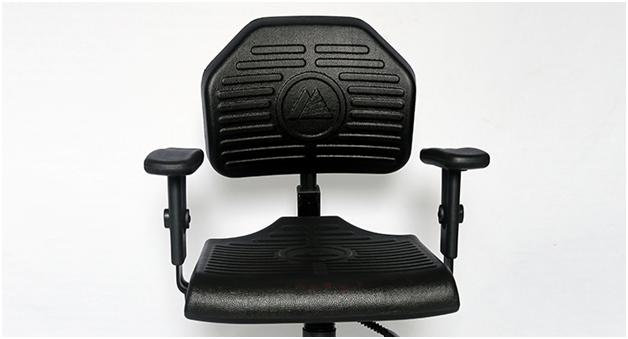
Synthetic leather: This material needs to be upholstered over white PU foam with typical density of 50-55 Kg/m3. ESD leatherette material is made by mixing ESD material with the resin at the time of manufacturing. This material is easily cleanable with IPAs, and can be used in non-certified ESD & cleanroom areas (>class10000) and regular ESD areas.
Ref photo below of : “Messung ESD Synthetic Leather Chair, XM-PRO Primo”
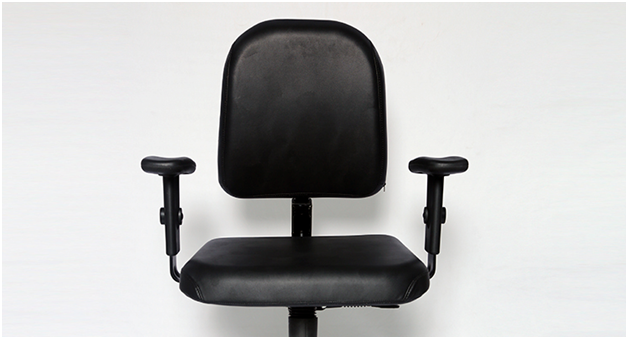
Fabric: This material needs to be upholstered over white PU foam with typical density of 50-55 Kg/m3. Fabric ESD material is prepared by interweaving ESD threads with regular fabric threads in an amount, which helps, achieve the ESD range as desired.
Refer Photo: “Messung ESD Fabric Chair, XM-PRO ACE”
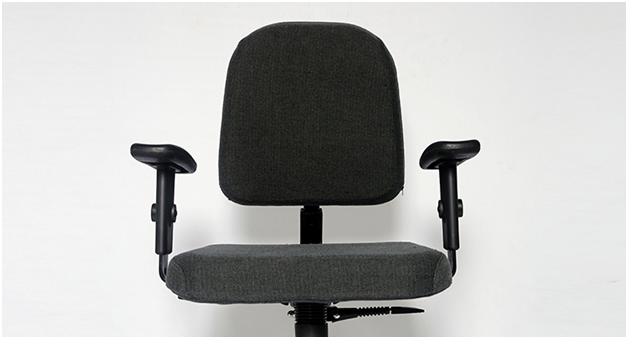
5. Reputed manufacturer
It makes sense to check out the credentials of the manufacturer when buying ESD chairs. What is their experience and reputation? Do they have a good track record? Do they have a good service network? Will they customize products for you? Do they have expertise in ESD & Ergonomics domains? It always pays to go with a supplier you can trust.
Most important is that the manufacturer should follow international standards for manufacturing, especially the ISO 9001-2008.
Conclusion
ESD chairs are essential furniture equipment for environments working with static sensitive electronics and devices. If you’re going to buy such chairs please evaluate the chairs on the basis of these five points to ensure you make the right choice, and keep not only your expensive electronics safe but also keep your workers happy, comfortable and productive for years.
Messung Group – the pioneer of automation industry in India brings you Navonmesh – a unique initiative to make India proud with its best-in-class Make in India capabilities. Under Navonmesh, Messung presents world-class ergonomic industrial furniture with ESD protection: the XM-PRO range of ESD worktables, ESD chairs and stools, test & measuring devices, antistatic workbench and testing equipment’s and ergonomic solutions for the electronic industry. Messung is the exclusive ESD chair manufacturer in Pune offering ESD safe chairs tested as per IEC 61340-5-1 safety standards.
